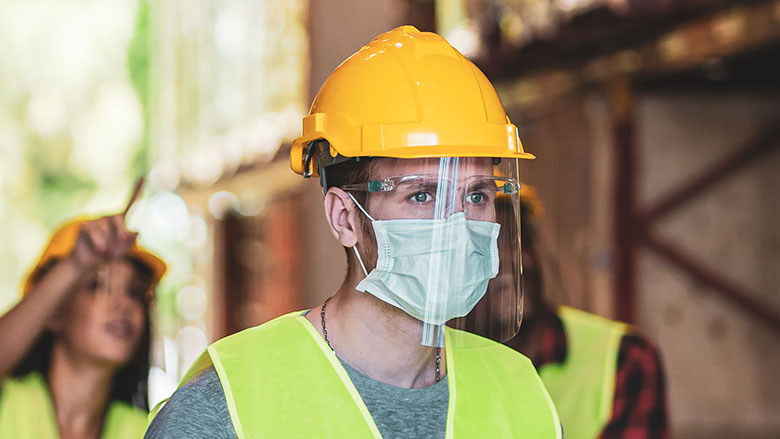2022 Top 10 OSHA Violations: Eye and Face Protection
No. 9 in the 10 most frequently penalized OSHA standards for FY 2022

Getty Images
Regulation 29 CFR 1926.102
Hazards
OSHA requires employers to provide eye and face protection to workers who are exposed to workplace hazards that include:
- Impact hazards from flying or falling objects such as large chips, fragments, particles, sand, sparks and dirt. Most of these objects are smaller than a pin head and can cause serious injury such as punctures, abrasions, and contusions. Impact hazards can be found in chipping, grinding, machining, masonry work, wood working, sawing, drilling, chiseling, powered fastening, riveting, and sanding. Personal protective equipment (PPE) for impact hazards: Safety spectacles with side shields or goggles must be worn.
- Heat hazards can be found in furnace operations, pouring, casting, hot dipping, and welding. PPE for heat hazards: Goggles or safety spectacles with special-purpose lenses and side shields. However, many heat hazard exposures require the use of a face shield in addition to safety spectacles or goggles.
- Chemical hazards. Chemicals hazards such as splash, fumes, vapors, and irritating mists may occur during acid and chemical handling, degreasing, plating, and working with blood. A large percentage of eye injuries are caused by direct contact with chemicals. Serious and irreversible damage can occur when chemical substances contact the eyes. These injuries often result from an inappropriate choice of personal protective equipment, which allows a chemical substance to enter from around or under protective eye equipment. PPE for chemical hazards: Goggles must be fitted and worn correctly, and may be supplemented by a face shield, depending on the level of hazard. Additionally, when working with or around chemicals, it is important to know the location of emergency eyewash stations and how to access them with restricted vision.
- Dust hazards can be generated by woodworking, buffing, and general dusty conditions. PPE for dust hazards: Either eyecup or cover-type safety goggles should be worn when dust is present. Safety goggles are the only effective type of eye protection from nuisance dust because they create a protective seal around the eyes.
Key provisions
- Eye protection that includes side protection must be provided when there is a hazard from flying objects (detachable side protectors like clip-on or slide-on side shields are acceptable.
- The employer shall ensure that each affected employee who wears prescription lenses while engaged in operations that involve eye hazards wears eye protection that incorporates the prescription in its design, or wears eye protection that can be worn over the prescription lenses without disturbing the proper position of the prescription lenses or the protective lenses.
- Eye and face PPE shall be distinctly marked to facilitate identification of the manufacturer.
- Eye protection must be “reasonably comfortable” when worn under the designated conditions.
- They have to fit snugly and shall not unduly interfere with the movements of the wearer.
Looking for a reprint of this article?
From high-res PDFs to custom plaques, order your copy today!






